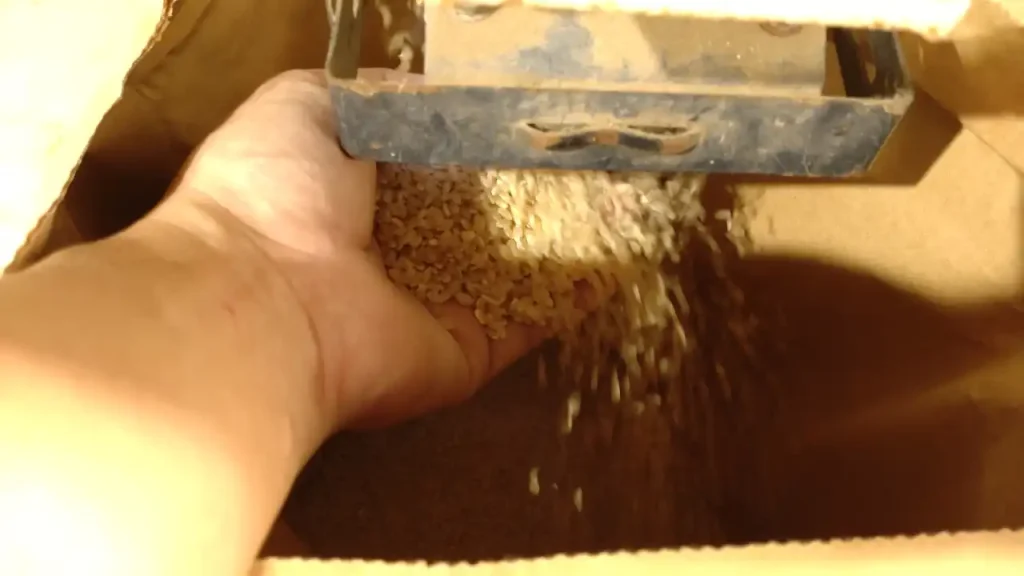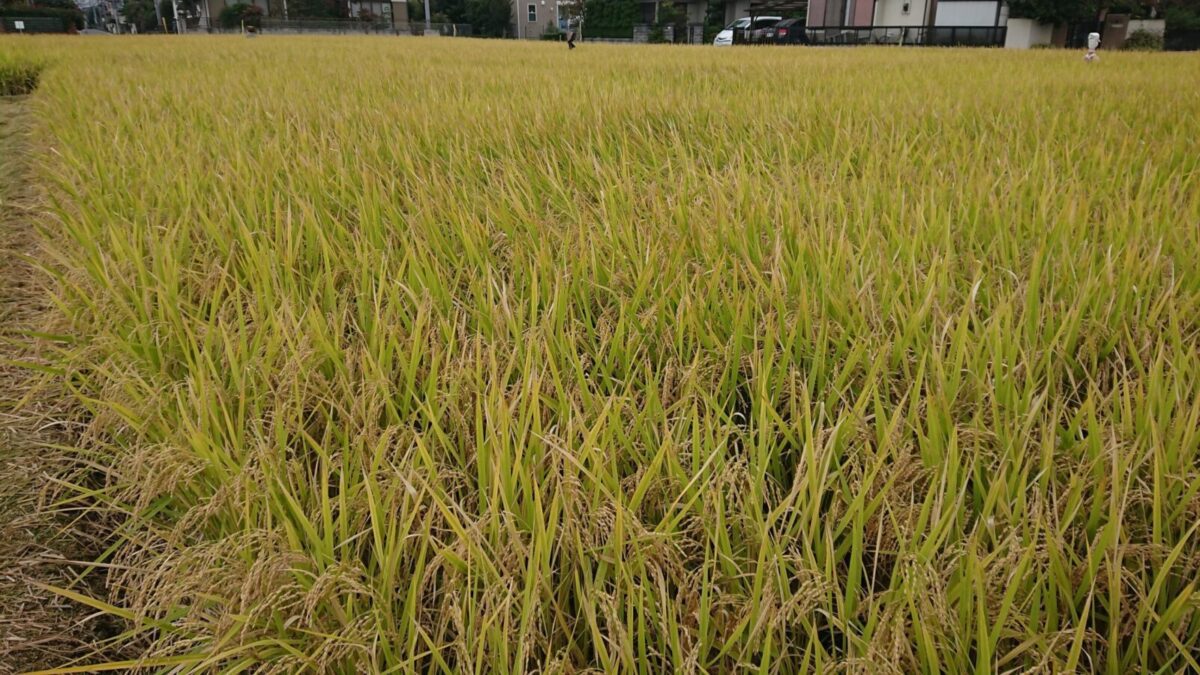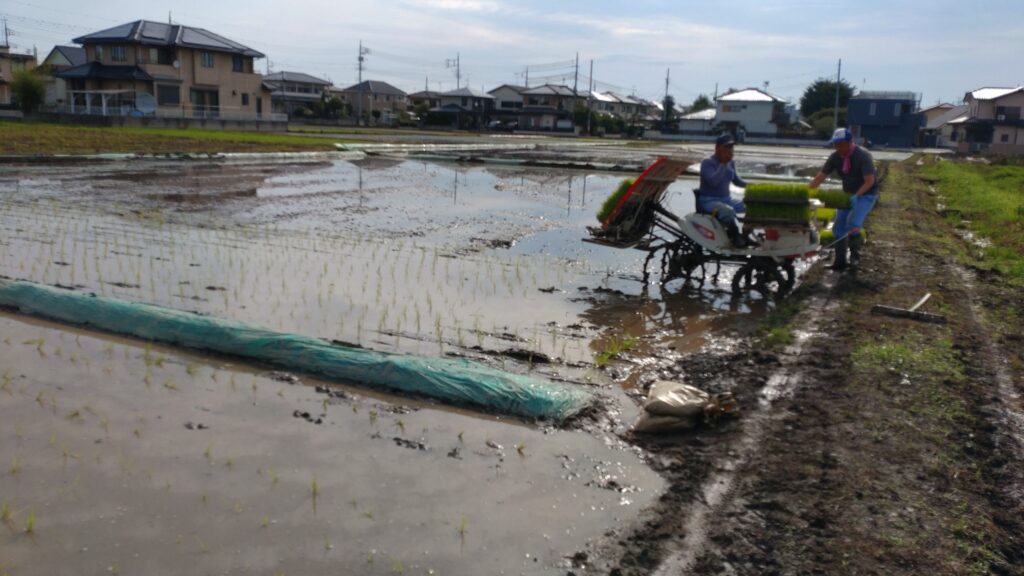
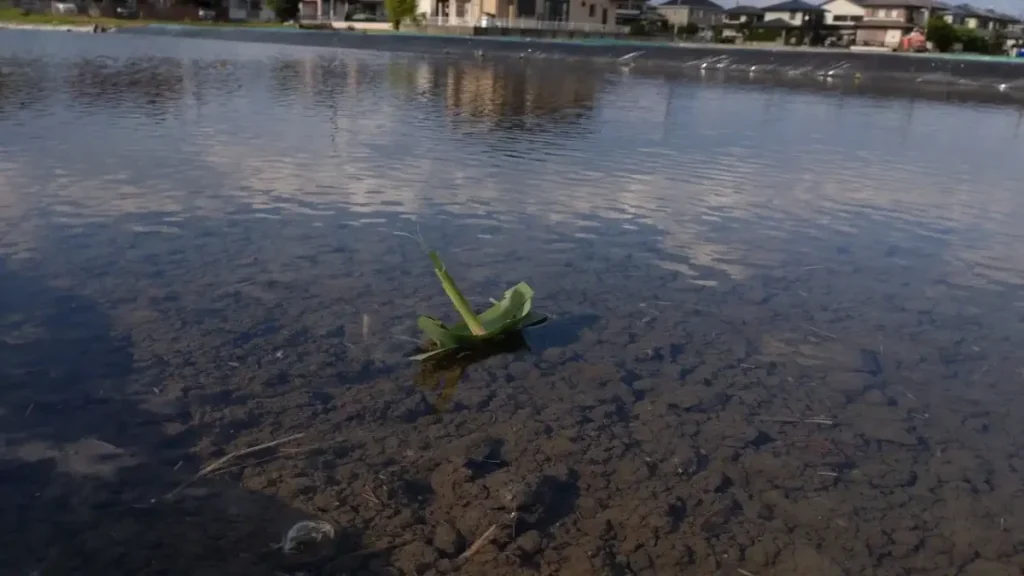
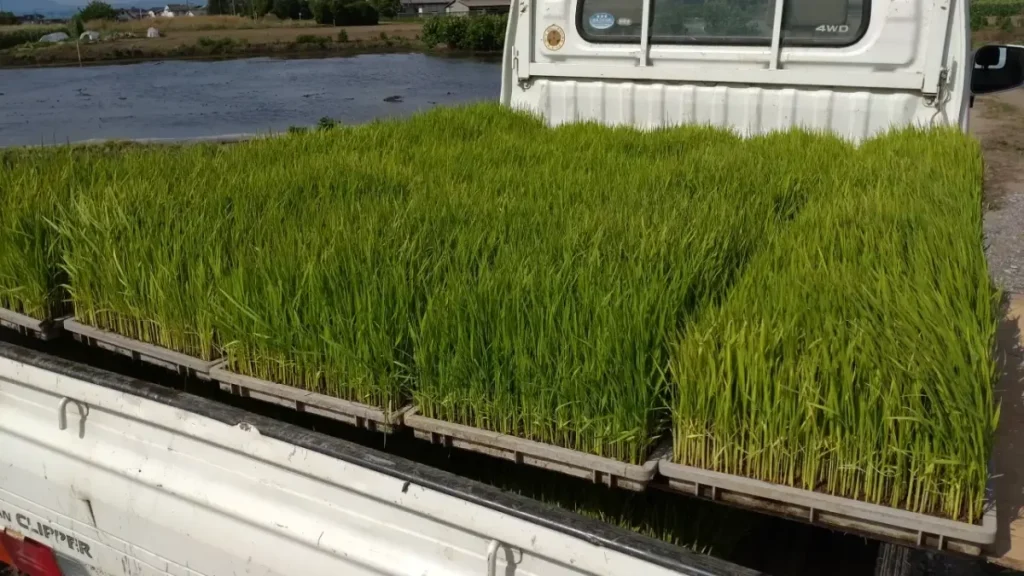

This year, with persistent rain and intense heat, farming faced considerable challenges. Despite this, we managed to carry out the rice harvesting, and thus, Grandpa and Grandma, along with the second son and 2-1, engaged in the rice harvesting activities.
In Japan, the process of cultivating rice involves germinating seeds, planting them individually using a rice planting machine in early summer, and finally harvesting the ripened rice after the hot summer.
Let me introduce the process of rice harvesting carried out by small Japanese farmers.
Rice Harvesting in Japan
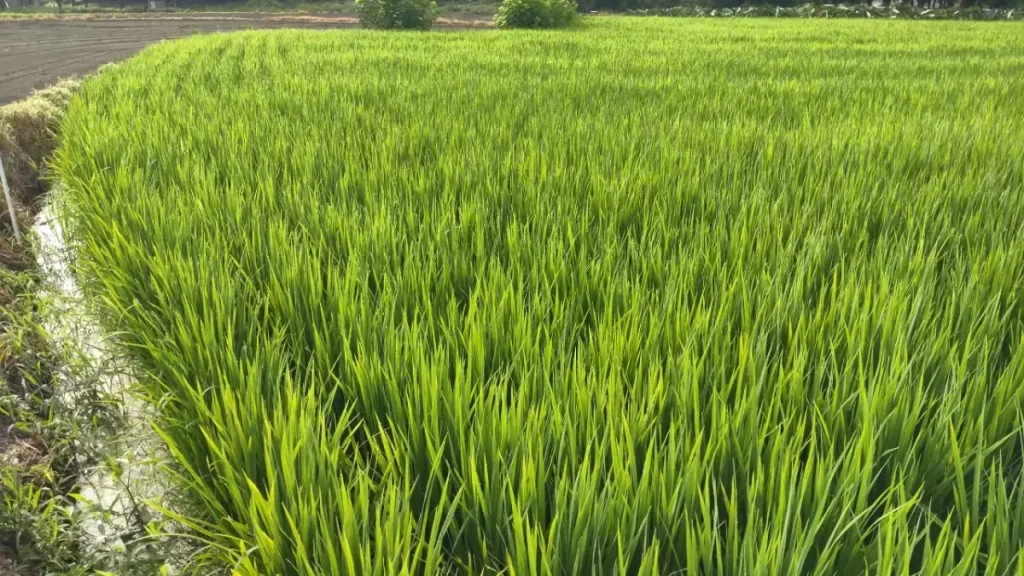
On a day when the weather was a concern, we were fortunate that it held up under cloudy skies, allowing us to achieve a reasonable harvest.
In the morning, we conducted the process of husking (momi-suri) the rice that had been harvested and dried the day before. For those unfamiliar with farming, let me briefly explain the steps involved.
- Rice Harvesting (cutting the rice grown in the paddy field))
- Threshing (separating the grains from the rice plants)
- Drying (allowing the grains to dry until they are ready for husking)
- Husking (peeling the husk from the grains, separating brown rice from husk)
→ At this point, the rice is divided into 30kg bags for shipment. - Polishing (polishing brown rice to remove bran and produce white rice for consumption)
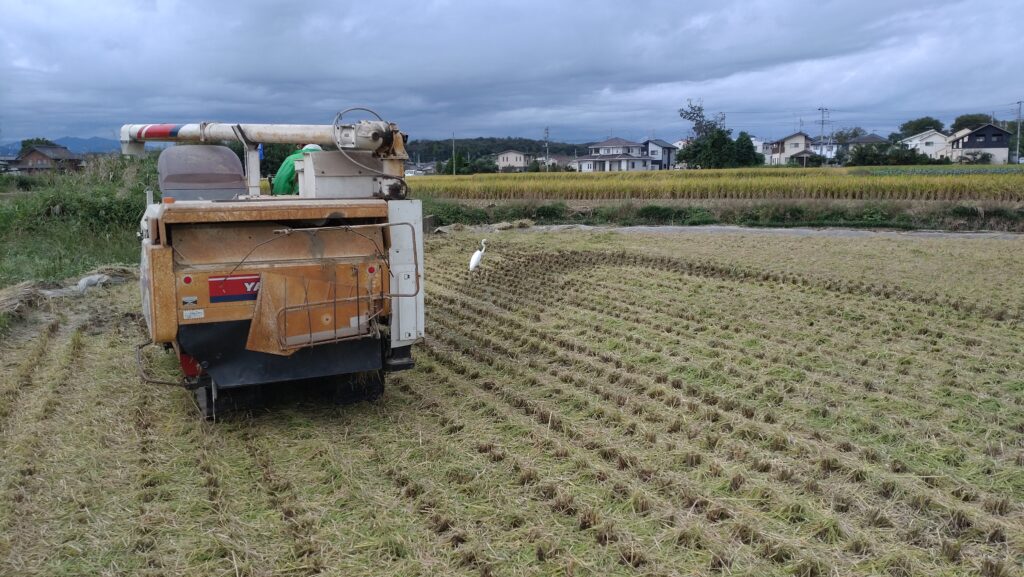

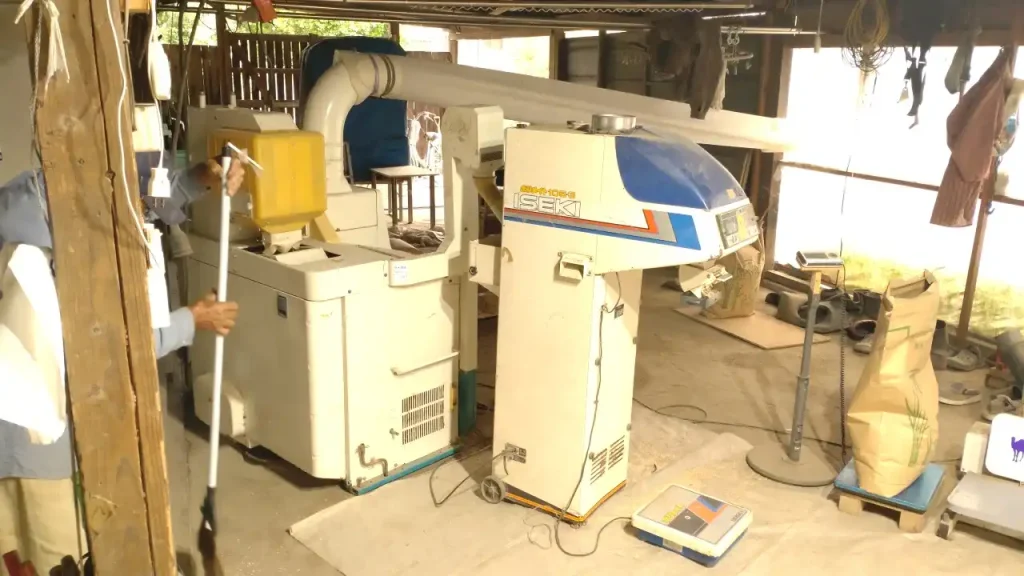
To simplify, it involves the stages from the rice seeds in the field to the final harvesting. Modern combines perform threshing while harvesting the rice.
The threshed grains are then dried in a drying machine, and once they are ready for husking, the husking process takes place. About 20 years ago, it was common to “hang” harvested rice in the sun for drying, followed by threshing and husking using a threshing machine.
From harvesting to drying and threshing, the work was done in the fields, while husking was typically carried out in the barn at home.
In particular, compared to neighboring farmers, Grandpa and Grandma’s house was relatively late in adopting drying machines.
The combine and drying machine they currently use were also bought secondhand and are considered somewhat outdated.
In my childhood, even tasks like threshing involved the participation of the second son and 2-1, and it was a family effort with the involvement of the elder Grandma.
While helping with farm chores, I also recall it being a fun game to chase and catch frogs and grasshoppers.
